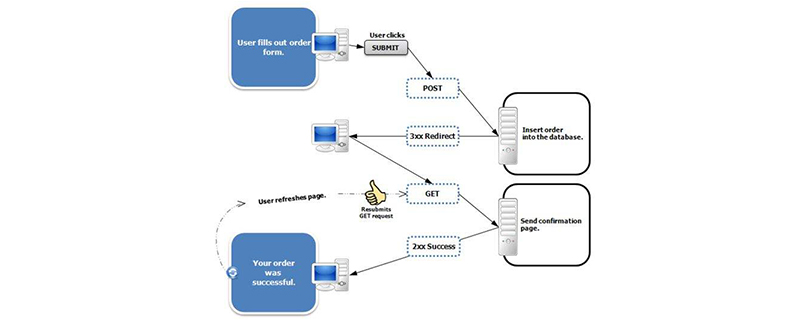
Servlet redirection refers to a mechanism specified by the http protocol. The workflow is: 1. The client initiates an http request and accesses the server-side component; 2. The server returns a 302 status code as the response result; 3. . When the browser receives this result, it will automatically access the new URL; 4. The browser accepts the new URL and returns the result.

What is redirection?
The redirection mentioned here is a mechanism specified by the http protocol. The workflow is described below.
(1) The client initiates an http request and accesses the server-side components.
(2) The server returns a response result with status code 302. The meaning of this code is to let the browser access another component, and the response result contains the URL address of accessing the new component. The new access component may or may not be in the same application.
(3) When the browser receives this result, it will automatically access the new URL.
(4) The browser accepts the new URL and returns the result.
Implementation
Redirection is completed through the sendRedirect (String location) method provided by the HttpServletReponse interface in the Servlet API.
Redirect Features
(1) The response result of the servlet source component will not be returned to the client.
(2) The servlet source component and the target component will not share the same ServletRequest object.
(3) If the source component submits the response result in advance before redirection, an exception will be reported.
(5) The redirected address does not have to be the application of the same server.
The above is the detailed content of What is servlet redirection. For more information, please follow other related articles on the PHP Chinese website!
 What is the difference between Douyin and Douyin Express Edition?
What is the difference between Douyin and Douyin Express Edition?
 Sublime input Chinese method
Sublime input Chinese method
 How to recharge Ouyiokx
How to recharge Ouyiokx
 How to register a permanent website domain name
How to register a permanent website domain name
 How to modify element.style
How to modify element.style
 What should I do if chaturbate is stuck?
What should I do if chaturbate is stuck?
 All uses of cloud servers
All uses of cloud servers
 How to check jvm memory usage
How to check jvm memory usage
 Which mobile phones does Hongmeng OS support?
Which mobile phones does Hongmeng OS support?